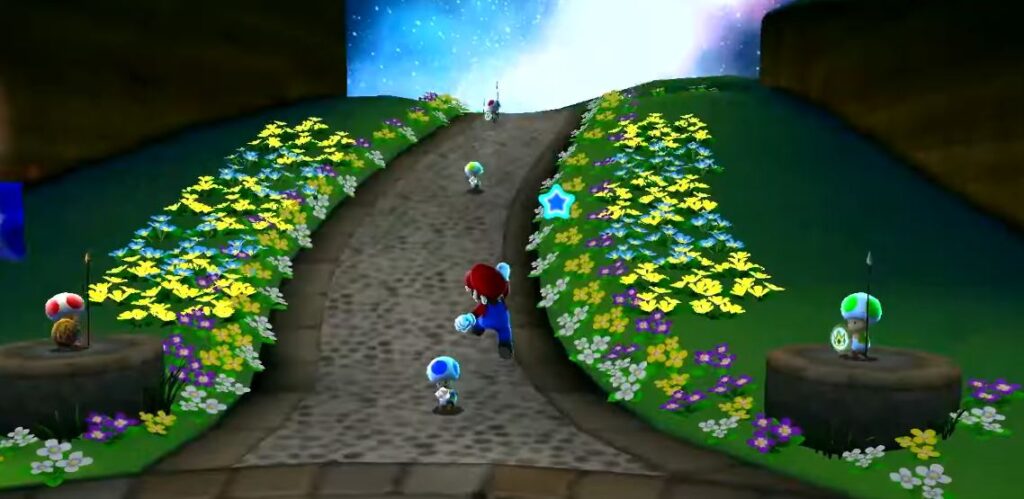Super Mario 3D All-Stars, which was released on September 18, 2020, was a significant event for both Nintendo and Super Mario fans. Three of Mario’s seminal 3D adventures—Super Mario 64, Super Mario Sunshine, and Super Mario Galaxy—were collected in this compilation. Each of these games has established itself as a platforming genre classic, and players were excited to play these beloved games in a contemporary setting when the collection was released on the Nintendo Switch. Although the collection’s concept promised a huge trip down memory lane, it has generated a continuing discussion about what it did and did not contribute.
Although the collection does a great job of bringing these games to the Nintendo Switch with improved controls and graphics, some fans felt that more could have been done. Compared to the initial releases, the improvements—such as improved resolutions and the addition of Joy-Con controls—offered a more fluid experience. Notably, however, Super Mario 64 stuck to a 4:3 aspect ratio at 720p rather than getting the widescreen treatment that many had anticipated. Despite being true to the original, many players who are used to the full-screen gameplay standards of today felt that this choice was restrictive. Additionally, despite the well-executed graphics, Super Mario 64 appeared to be the least edited, and its transfer from the Nintendo 64 to the Switch didn’t have the same impact as some might have hoped.
| Game Information | Details |
|---|---|
| Release Date | September 18, 2020 |
| Platforms | Nintendo Switch |
| Included Games | Super Mario 64, Super Mario Sunshine, Super Mario Galaxy |
| Resolution | 1080p for Sunshine and Galaxy, 720p for 64 |
| Gameplay Modes | Single-player, Multiplayer |
| Music | Full soundtracks from all three games |
| Controls | Joy-Con, Pro Controller, GameCube Controller support added via patch |
| Game Modes | Cooperative play in Galaxy, HD remaster of the original titles |
| Price at Launch | $59.99 (USD) |
| Sales | 9 million copies sold worldwide (as of March 2021) |
| Availability | Limited-time availability until March 31, 2021 |
Going on to Super Mario Sunshine, it’s evident that the GameCube original saw the most significant adjustments to its controls and visuals. The game’s graphics were redesigned to run at a breathtaking 1080p, providing a more colorful and intricate representation of Isle Delphino. The switch to the Nintendo Switch wasn’t totally seamless, though. The analog triggers on the GameCube, which were crucial to Sunshine’s original gameplay mechanics—more especially, controlling Mario’s water pump, FLUDD—were one of the most annoying problems. Nintendo had to make changes because the Joy-Con controllers on the Switch lacked analog triggers. Many players, especially those who had muscle memory from the GameCube version, found these substitutes to be less intuitive. The lack of fluid control options for many players was not entirely resolved by the post-launch patch, which added support for the GameCube controller to address some of these issues.
The well-liked Wii game Super Mario Galaxy did better when it came to the Switch. Players can now use their Joy-Con controllers to replicate the original Wii Remote and Nunchuk setup thanks to the game’s tasteful adaptation of motion controls. It was also a welcome improvement to have the Pro Controller support, which employed gyroscope controls for pointer functions. Running at 1080p, the game’s visuals were a delight, bringing the breathtaking settings to life in a way that was both new and recognizable. Galaxy wasn’t completely immune to criticism, though. Originally created with the Wii’s motion controls in mind, some motion-sensitive parts felt unwieldy and less entertaining when utilizing the Switch’s new input techniques.

Super Mario 3D All-Stars’ music player mode, which featured all three of the included games’ original soundtracks, was one of its best features. For gamers who wished to relive the catchy tunes from Mario’s 3D adventures even when they weren’t actually playing the games, this was especially helpful. For many, the addition of a music player was a welcome surprise that gave the compilation another level of complexity.
But not every element of the collection received the same level of appreciation. It was controversial to decide to restrict Super Mario 3D All-Stars’ availability. The game’s initial availability was brief; on March 31, 2021, the digital version was taken down from the Nintendo eShop and physical copies were discontinued. Many fans were disappointed by Nintendo’s marketing of this as a special anniversary-themed release, particularly those who were unable to obtain the collection prior to its delisting. Some sellers listed the game for outrageous prices on secondary markets as a result of the scarcity. Players who thought the limited release was a marketing gimmick were not particularly satisfied with Nintendo’s explanation that this strategy was intended to mark the anniversary in a special way.
The sales figures speak for themselves in spite of these objections. Super Mario 3D All-Stars was one of the top-selling video games of 2020, with over 9 million copies sold by March 2021. It is impossible to overestimate the excitement surrounding this collection, and this degree of success highlights the Super Mario franchise’s ongoing appeal. The compilation undoubtedly gave fans the chance to enjoy these classics on the Switch in a convenient, improved format, despite certain aspects of it falling short of expectations.
More generally, Super Mario 3D All-Stars is part of a growing trend in the video game industry: the resuscitation of classic games through remasters and re-releases. Nintendo has long been renowned for its ability to update its cherished franchises to newer platforms while maintaining their integrity. Super Mario 3D All-Stars is a prime example of how nostalgia-driven compilations can rekindle interest in classic games, enabling them to appeal to both new and devoted fans.
Taking a broader view, the collection emphasized Nintendo’s approach of providing content that speaks to both contemporary gamers’ sensibilities and nostalgia. It also represents a larger trend in the industry, where older games are being reimagined and modified for contemporary systems rather than merely being preserved. It remains to be seen if this strategy will hold up over time, but despite its few flaws, Super Mario 3D All-Stars is unquestionably a brilliant example of how to do it correctly.

